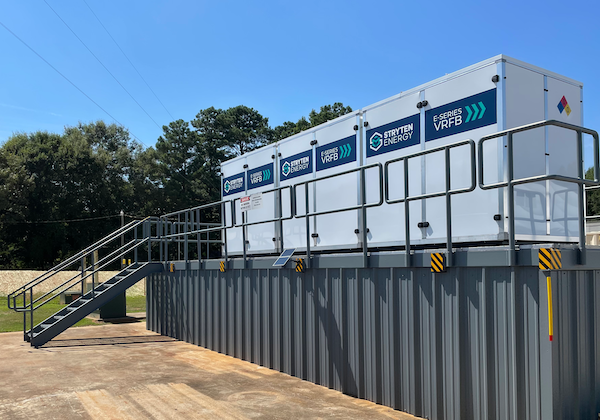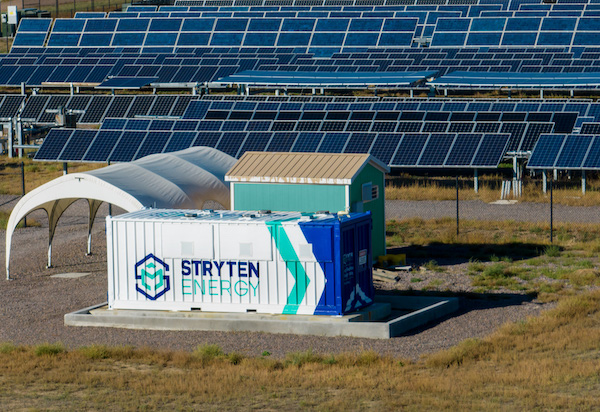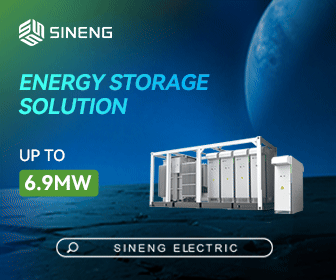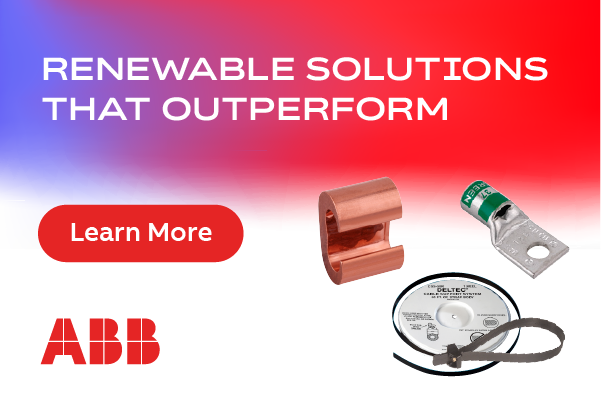Domestic Supply Chain and Manufacturing for VRFB Are Critical for Long-Duration Energy Storage
The likelihood of a renewable power grid increases the need for energy storage systems (ESS) capable of reliably and cost-effectively shifting the time between when renewable energy is generated and when it is used. More specifically, when solar generation exceeds demand during the day, and wind generation exceeds demand at night, ESS are needed to charge with excess renewable generation, store it, and then discharge during periods when demand exceeds generation. This process is called “energy shifting.”
Industry forecasts suggest that 61 percent of energy storage systems will provide energy shifting by 2030. There is a deployment potential of over 100 GW of energy storage systems with four to 12-hour discharge durations for energy shifting.

Benefits of vanadium redox flow batteries
The Department of Energy (DOE) has identified vanadium redox flow batteries (VRFB) as well suited for applications such as utility-scale energy storage, microgrids, and renewables integration.
One of the major benefits of VRFB is a near-limitless cycle life. With proper maintenance, VRFB systems can operate for 20 or more years without the electrolyte losing energy storage capacity. With such a long lifespan, these battery systems provide a more sustainable energy storage technology for on-demand power needs.
Another aspect of sustainability is the fact that vanadium electrolyte is almost infinitely reusable. The electrolyte that constitutes the bulk of a VRFB system can be recycled and then used in another battery system.
VRFB systems are unique in their ability to independently design the systems’ power and energy ratings. In a standard battery such as lithium-ion, the energy is stored in solid electrodes, and the energy and power ratings are linked as they are both determined by the electrode area and thickness. In contrast, VRFB energy is stored as a liquid electrolyte in the tanks, and the chemical conversion of the electrolyte takes place when the electrolytes circulate through separate power conversion stacks (comparable to fuel cells) that set the system power. The length of operation can be increased solely by using larger tanks that hold more electrolyte, without making any changes to the stacks.
VRFB systems are also safer across a number of factors compared to other battery technologies. Thermal runaway is not a risk, so there is no need to space out batteries. They can also be vertically stacked or take advantage of larger vertical silos to minimize the land area required for larger systems.
Need for domestic supply chain and manufacturing
The DOE has outlined a range of cost improvements necessary for VRFB to achieve the DOE levelized cost of storage goal of $0.05/kWh. These areas include inefficient and expensive manufacturing technologies, lack of standardized supply chains and system integration challenges, and challenges with manufacturing scale-up.
Vanadium electrolyte constitutes 30 to 40 percent of the cost for VRFB systems. As such, the production of vanadium electrolyte has been cited as a critical challenge. The current supply chain and manufacturing of VRFB systems relies on material and component sources outside the U.S., some of which are “unfriendly” regions. Potential supply chain disruptions would inhibit manufacturing scale-up if the demand for vanadium grows.
The U.S. supply chain for vanadium electrolyte is early in its development. There is strategic value in a domestic supply chain and manufacturing with the increasing need for VRFB to shore up a renewable power grid. Under the Inflation Reduction Act, incentives for manufacturing of clean energy system components in the U.S. will strengthen the value of vanadium electrolyte produced domestically.
The newly formed Flow Battery Industry Group within Battery Council International (BCI) is bringing together manufacturers and suppliers to develop strategies to strengthen and grow the North American supply chains for flow battery manufacturers. The concept for the group grew out of public-private partnership discussions between a U.S. national lab, BCI, and an energy storage industry company. It provides the forum needed to address key common issues, including testing, safety and industry statistics, as well as to facilitate the foundation of a domestic supply chain to support flow battery manufacturers.

Applying best practices from the lead battery industry
In response to this market need and the production potential, the best practices of the lead battery industry in the U.S. can be applied to the anticipated rapid growth of VRFB markets.
For instance, both vanadium and lead batteries have sulfuric acid and water as primary components. Whereas the lead battery receives its acid on a daily basis, the current vanadium electrolyte small volume practices typically use inefficient supply of raw materials and shipment of finished product in small batches.
Improved supply chain protocols, combined with the typical savings from economies of scale, are prime examples of how the best practices of the lead battery industry can help drive rapid cost down of the vanadium electrolyte to be more in line with market expectations for ESS systems costs.
The lead battery industry also has extensive vertically integrated capabilities, from engineering to manufacturing, to sales and marketing, to operations and maintenance services, as well as its robust circular economy (with 99 percent of the lead battery materials recycled). As vanadium electrolyte production levels increase to meet demands, volumes could not only meet, but far exceed levels of the lead battery industry. Vanadium electrolyte suppliers will need to engage in similar practices.
Future of energy storage
The United States is at an inflection point concerning the growing demand for energy and the increasing the stress on America’s transmission infrastructure. As technology costs decrease and deployment of renewables increases, energy storage will be an important aspect of the power grid in the coming years. With 554 MW / 1,553 MWh installed in the first quarter of 2023, the U.S. now has a cumulative grid-scale storage capacity of 10.4 GW, with ~75 GW expected to be installed by 2027.
A successful transition to clean energy requires pairing renewable energy generation with new long-duration energy storage technologies like VRFB that are rapidly scalable, domestically available, sustainable, safe, and resilient.
Scott Childers is Vice President of Essential Power at Stryten Energy, a stored energy solutions provider in transportation, motive, and essential power industries.
Stryten Energy | www.stryten.com
Author: Scott Childers
Volume: 2023 November/December









